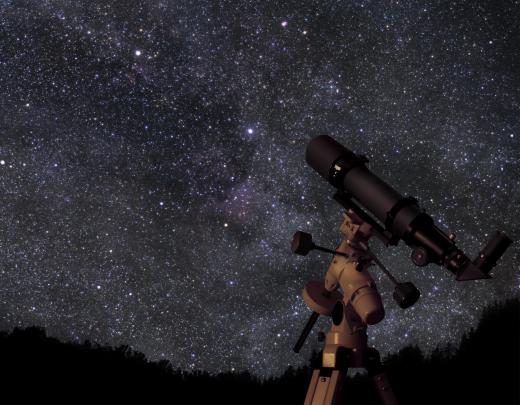What are Some Trans-Neptunian Objects?
 Michael Anissimov
Michael Anissimov
Trans-Neptunian Object (TNO) is a blanket term that applies to any solid body orbiting the Sun beyond the orbit of Neptune. This includes Pluto and similar bodies called plutinos, the recently discovered Eris and other scattered disc objects, Kuiper belt objects, and many comets. The first trans-Neptunian object to be discovered was Pluto, in 1930. Between 1930 and 1992, no other trans-Neptunian objects were discovered besides Pluto's moon, Charon. Around 1992, telescope technology improved to the point where many other trans-Neptunian objects could be resolved, and now over 1000 are known.
Neptune is about 30 AU (Earth-Sun distances) from us, whereas trans-Neptunian objects include anything that orbits at distances between 30 AU to as far as 50,000 AU or more. Objects under the gravitational influence of the Sun extend as far as a light year, almost one-quarter of the way to the nearest star, Proxima Centauri. Most of these are comets which orbit in a hypothetical cluster called the Oort cloud. The Oort cloud is so distant that probing its dark and rocky contents with present-day telescopes is impossible.

The majority of trans-Neptunian objects can be found in the Kuiper belt, which is located from Neptune's orbit at 30 AU to about 55 AU from the Sun. Unlike the asteroid belt which consists primarily of rock and metal, the Kuiper belt objects are made up of methane, ammonia, and water ices. When distant solar system bodies primarily made of ice enter into orbits that bring them through the central solar system, their ices melt and turn to steam, producing cometary tails.
Unlike the planets, trans-Neptunian objects may have extremely eccentric (non-circular) or inclined (to the planet of the elliptic) orbits. One object, (87269) 2000 OO67, comes as close to the Sun as 21 AU, but then orbits all the way out to 1,000 AU. It takes 12,705 years to orbit the Sun. Another object, 2004 XR190, is the most "tilted" object known, orbiting at an inclination of 47 degrees from the elliptic.
As our telescopes get more powerful, more trans-Neptunian objects are sure to be discovered. Some scientists believe that there may be objects as large as Mars out there.
AS FEATURED ON:
AS FEATURED ON:











Discuss this Article
Post your comments